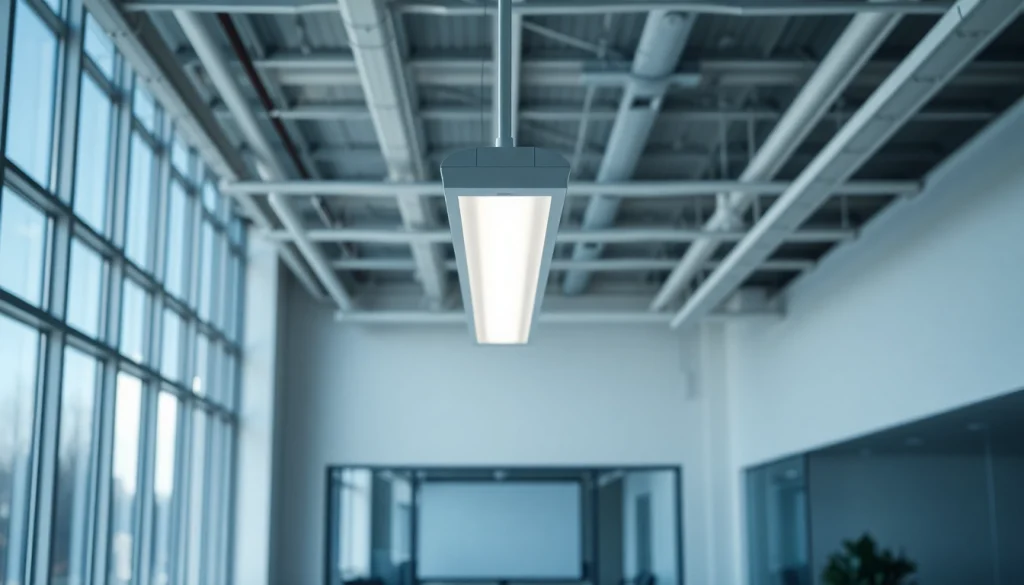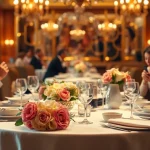Understanding LED Batten Light: Features and Benefits
What is LED Batten Light?
The LED Batten Light is a modern lighting fixture that features a long, rectangular or linear design. It resembles traditional tube lights but comes with advanced technologies that enhance its functionality and aesthetic appeal. These lights are versatile, making them suitable for various applications, from commercial spaces to residential settings.
LED batten lights utilize light-emitting diodes (LEDs) as their light source, allowing them to emit bright, energy-efficient illumination. Their design promotes a broad beam angle, providing uniform light distribution across spaces. This makes them ideal for areas requiring consistent lighting, such as warehouses, hallways, and offices.
Advantages of Using LED Batten Light
LED batten lights come with numerous advantages that make them a preferred choice over traditional lighting solutions:
- Energy Efficiency: LED technology consumes significantly less power compared to traditional incandescent or fluorescent lighting, leading to lower energy bills and reduced carbon footprint.
- Longevity: These lights typically have an operational lifespan of up to 50,000 hours, significantly reducing the frequency and costs associated with replacements.
- Low Heat Emission: Unlike conventional bulbs, LED batten lights produce minimal heat, enhancing safety and comfort, especially in enclosed spaces.
- Durability: Built with robust materials, LED batten lights are resistant to shocks and vibrations, making them suitable for various environments, including industrial settings.
- Flicker-Free Illumination: Many LED batten lights offer flicker-free lighting, reducing eye strain and improving work efficiency.
Comparative Analysis with Traditional Lighting Solutions
When comparing LED batten lights with traditional lighting options, several factors come into focus:
| Feature | LED Batten Light | Traditional Lighting |
|---|---|---|
| Energy Consumption | Low (up to 80% less than incandescent) | High |
| Lifespan | Up to 50,000 hours | 1,000-15,000 hours |
| Heat Production | Minimal | High |
| Maintenance Cost | Low | High |
| Light Quality | High; Flicker-free | Varies; Can flicker |
This comparative analysis highlights the numerous benefits that LED batten lights hold over traditional lighting solutions, positioning them as the superior choice for many applications.
Installation Guide for LED Batten Light
Choosing the Right Location
Proper placement of LED batten lights is crucial to maximizing their effectiveness. Here are essential considerations when choosing the right location for installation:
- Space Type: Consider the area where you want to install the lights. LED battens work well in both commercial and residential spaces, including warehouses, garages, kitchens, and offices.
- Lighting Needs: Assess the amount of light required for the space. High ceilings may require longer battens or multiple fixtures for adequate coverage.
- Aesthetics: The light integration should enhance the room’s design. Consider the colors and materials of the space when selecting fixture designs and light temperatures.
Tools and Materials Required
To ensure a smooth installation process, gather the following tools and materials:
- LED batten lights
- Mounting brackets (if required)
- Screwdriver
- Drill and drill bits
- Wire cutters and strippers
- Electrical tape
- Voltage tester
- Safety goggles and gloves
Step-by-Step Installation Process
The installation process for LED batten lights is straightforward. Here’s a step-by-step guide:
- Safety First: Before starting, ensure the power is turned off at the circuit breaker. Use a voltage tester to confirm no current is flowing.
- Mark the Installation Location: Hold the LED batten light in the desired position and mark the locations of the mounting brackets with a pencil.
- Drill Holes: Use a drill to create holes for the screws at your marked locations, ensuring they are appropriately sized for the screws being used.
- Attach Mounting Brackets: Secure the mounting brackets to the ceiling or wall using screws, ensuring they are tightly fastened.
- Connect Wires: Carefully connect the LED batten light’s wiring to the mains using wire connectors. Match wires by color (usually black to black, white to white), and secure with electrical tape.
- Mount the Light: Place the LED batten light onto the mounted brackets and secure it as per the manufacturer’s instructions.
- Power On: Restore power at the circuit breaker and test the installation to ensure the light is functioning correctly.
- Final Checks: Inspect the installation for any loose fittings or exposed wires and ensure the area is clean after installation.
Design Considerations for LED Batten Light Usage
Incorporating LED Batten Light in Commercial Spaces
LED batten lights can significantly enhance commercial spaces by providing effective and efficient lighting solutions. Here are several factors to consider:
- Functionality: Determine the primary function of the space (e.g., office, retail, industrial) and select appropriate lighting levels accordingly.
- Aesthetic Appeal: Choose designs and finishes that complement the architectural style of the commercial space.
- Energy Management: Consider energy-saving options, such as dimmers or smart controls, to optimize usage and reduce operational costs.
Home Design with LED Batten Light
Integrating LED batten lights in residential designs can yield beautiful and functional illumination. Consider the following aspects:
- Zones: Use LED batten lights to define specific areas within an open floor plan, ensuring adequate lighting for each zone.
- Accent Lighting: Incorporate LED batten lights with adjustable features to highlight artwork, bookshelves, or architectural details in your home.
- Color Temperature: Choose a color temperature that matches each room’s purpose and mood. Warmer lights are perfect for living areas, while cooler lights work well for kitchens and workspaces.
Color Temperatures and Their Effect on Ambiance
Understanding color temperature is vital for creating the desired ambiance. Color temperature affects the mood and functionality of a space:
- Warm White (2700K – 3000K): Creates a cozy and inviting atmosphere, ideal for living rooms and bedrooms.
- Neutral White (3500K – 4100K): Offers a balanced and natural light, suitable for kitchens and bathrooms.
- Cool White (5000K – 6500K): Mimics daylight, enhancing alertness and focus. Excellent for offices and workspaces.
Selecting the right color temperature can significantly affect not only the aesthetics of your space but also the productivity and comfort of its occupants.
Maintenance Tips for Longevity of LED Batten Light
Regular Cleaning and Care Practices
To maximize the lifespan and performance of your LED batten lights, implement these maintenance practices:
- Dust and Dirt Removal: Regularly wipe down the surface of the lights with a soft cloth to prevent dust accumulation, which can affect brightness.
- Check Fixtures: Periodically inspect the fixtures for any signs of wear or damage, ensuring all connections remain tight and secure.
- Cleaning Schedule: Create a cleaning schedule to ensure that maintenance is consistently carried out, ideally every few months.
Troubleshooting Common Issues
Despite their durability, LED batten lights can experience issues. Here are common challenges and solutions:
- Flickering Light: This may be due to poor connections or the need for a compatible dimmer switch. Ensure all connections are tight and consider upgrading to a dimmer that supports LED lights.
- No Light Output: If the light fails to turn on, check the circuit breaker and wiring connections. If all seems correct, the LED light might need replacement.
- Inconsistent Brightness: This might suggest an issue with the power supply or the light fixture itself. Investigating the wiring and ensuring proper power supply can help resolve the issue.
When to Consider Replacement
Although LED batten lights are known for their longevity, replacement may be necessary under certain conditions:
- Performance Decrease: If the light output noticeably diminishes, it may be time to consider replacement.
- Physical Damage: Any cracks or damage to the fixture may warrant replacement, especially in areas subject to physical stress.
- Changing Needs: If the space design evolves, you might want to replace existing fixtures with new styles or technologies that match your current aesthetic and functional requirements.
Future Trends in LED Batten Light Technology
Advancements in Energy Efficiency
The future of LED batten lights is bright, with ongoing advancements in energy efficiency. Manufacturers are focusing on improving the power-to-light efficiency ratio, enabling higher light output than current models while consuming even less energy.
These developments may lead to even lower energy bills and reduced environmental impact, aligning with global sustainability efforts.
Integration with Smart Home Systems
As smart home technology continues to rise, LED batten lights are also adapting. Future models are likely to integrate seamlessly with smart home systems, enabling users to control lighting remotely via smartphones or voice-activated devices. This integration allows for automated lighting schedules and the ability to customize settings based on individual preferences, significantly enhancing user experience.
Design Innovations on the Horizon
Innovations in design are expected to extend beyond functionality. Future LED batten lights may showcase sleeker designs, customizable colors and patterns, and modular designs that users can adapt based on their specific needs. These advancements promise to enhance aesthetic appeal while providing superior lighting and energy efficiency.
In conclusion, the LED Batten Light embodies the perfect blend of style, performance, and efficiency, making it an ideal lighting solution for a variety of applications. Its numerous benefits, combined with easy installation and maintenance, position it as a compelling choice for anyone looking to enhance their lighting environment, whether in commercial settings or at home. The ongoing advancements in LED technology will continue to pave the way for innovative solutions tailored to meet the demands of modern lighting needs.


